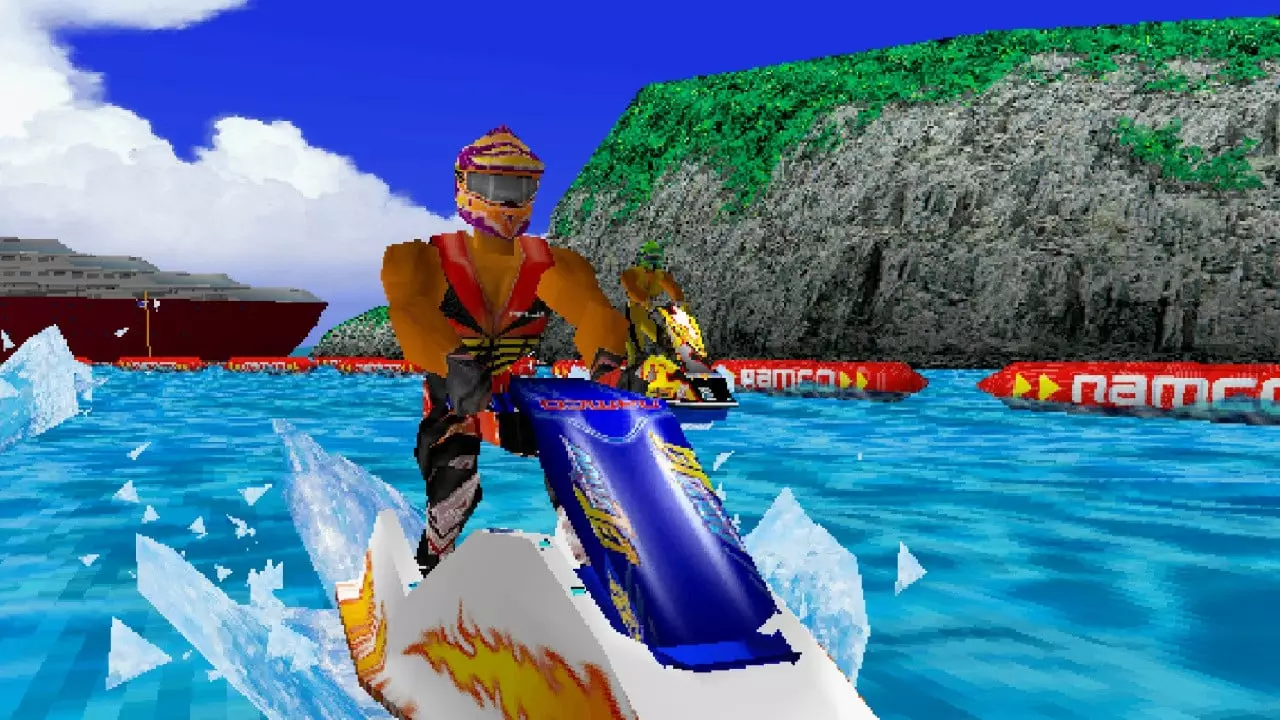In the realm of classic arcade racers, Aqua Jet stands as a nostalgic reminder of the 90s’ vibrant water-sport-themed gaming wave. Originally released alongside titles like Wave Race 64, its colorful polygonal aesthetic and high-speed racing captured the imaginations of arcade enthusiasts and console owners alike. Recreated with evident care by Hamster Corporation for Switch 2, the game offers a window into that energetic era, complete with enhanced features like gyroscopic controls and HD rumble, aimed to simulate the thrill of riding a personal watercraft. However, despite its nostalgic appeal and polished presentation, Aqua Jet suffers from a fundamental flaw: limited content. Its shallow gameplay depth, characterized by only two available courses, inhibits long-term engagement and turns what could have been a compelling revival into a fleeting experience.
Gameplay Limitations and their Impact
The core of Aqua Jet’s disappointment lies in its minimalistic track selection. With only two courses—one standard and a barely differentiated extended version—the game offers scant variety. Even unlockable features such as mirror tracks or whimsical modes like a penguin race are mere cosmetic diversions that do little to address the game’s fundamental lack of substance. Modes like High Score and Time Attack bring brief replay value, yet these are isolated challenges aimed more at competitive leaderboards than meaningful gameplay progression. The inclusion of a rewind function is a positive touch, giving players a safety net in mastering turns, but it ultimately doesn’t compensate for the repetitive loops of racing the same two courses over and over again.
The game struggles to hold the player’s interest beyond initial curiosity. Its visual design remains appealing—bright sights and dynamic speed effects still succeed in delivering that adrenaline rush. But excitement diminishes swiftly when the core gameplay feels underscored by monotony. The excitement of soaring over waves and plunging underwater is offset by the predictability of course layouts, making the experience feel like an arcade relic with little to grow into.
Technological Features Versus Content Depth
On a technical level, Aqua Jet on Switch 2 shows careful attention to detail. The widescreen formats, multiple language options, and the integration of modern control schemes—such as gyroscopes and HD rumble—demonstrate a respect for both retro fans and contemporary gamers. These features enhance immersion and add a layer of tactile fun that can elevate a simple racer into a more engaging experience. Yet, they cannot compensate for the game’s fundamental shortcoming: the meager amount of playable content.
Online leaderboards add a competitive angle, prompting players to continually improve their times. Still, the absence of multiplayer modes—cooperative or versus—limits social engagement, which is a key component in modern gaming. Without the ability to race against friends or connect in real-time, Aqua Jet feels intrinsically isolated; it’s a solo challenge that fades into irrelevance once personal bests are achieved. This design choice emphasizes how essential content variety and multiplayer options have become in contemporary experiences, and Aqua Jet’s omission leaves the game feeling unfinished and hollow.
A Nostalgic Curio or a Repetitive Flash in the Pan?
Ultimately, Aqua Jet’s charm resides in its aesthetic and the nostalgic promise it offers. It’s a sleek, colorful throwback suitable for gaming historians or fans of ‘90s arcade style. Hamster Corporation’s effort to bring this vintage title to Switch 2 is commendable, and the game’s polished presentation and added features show genuine respect for the source material. Nonetheless, the lack of game modes, variety, and meaningful progression leaves it feeling more like a digital museum piece than a fully fleshed-out racing experience.
For dedicated fans or those looking to revisit the joy of old arcade racers, Aqua Jet might hold some appeal, especially with its online leaderboards and customizable options. But for casual gamers seeking a robust, replayable water-racing thrill, this game offers too little substance to justify repeated plays. The shimmering visuals and nostalgic flavor cannot mask the glaring reality: a potential classic diminished by narrow content scope. It’s a reminder that even the most beautiful graphics and modern controls cannot salvage a game that lacks the depth necessary to sustain interest over time.

